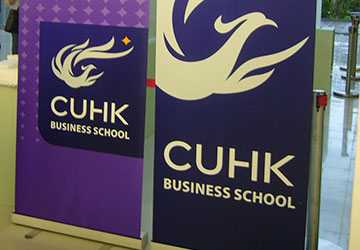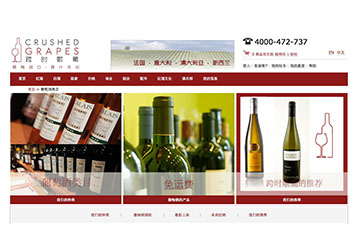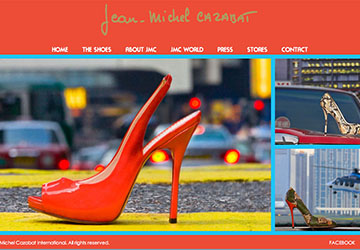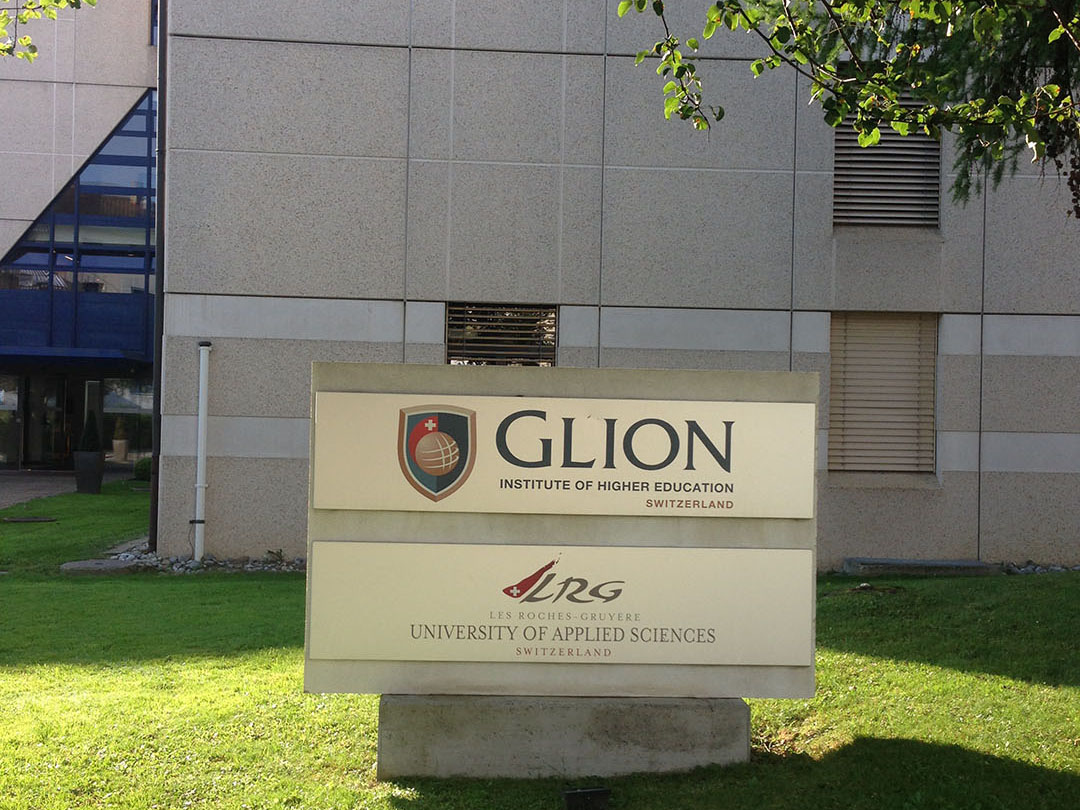PROJECTS
Some case stories

INSEAD

CUHK

GIHE

Crushed Grapes

JMC
This is a small selection of our projects.
For confidentiality reasons, our most recent projects cannot be published.
Strategic direction and program development for INSEAD
INSEAD
Focus:
Research | Program strategy, repositioning and design | Marketing and communication strategy
Sector:
education | finance
Background
In 2013, INSEAD launched their international Masters in Finance (MFin), focused on the Asia and Middle East markets. Tailored for working professionals, it provided an opportunity for executives to develop their finance and accounting skills beyond that achievable within an MBA, as well as acquire leadership and management skills through a choice of electives.
The challenge
Although the program was one of the few post-experience courses on offer globally, it had failed to reach its full potential, with participant numbers lower than expected. Two years after the program was launched, questions were being raised over the program’s positioning, who they were targeting and the program’s design, as well as its overall marketing strategy. Decisions needed to be made on the program’s future development.
Role of SQS
To make recommendations on the market positioning for the MFin program in relation to market and participant needs and provide direction on the overall development of the program, including program content and design, against a more clearly defined target profile and to increase the program’s appeal particularly in the Asian market.
The solution
The solution was based on a combination of desk research, market analysis and one-on-one in-depth interviews amongst stakeholders and Faculty involved in the program, as well as prospective students and alumni. These were conducted to uncover insights and develop hypotheses, which were validated using a quantitative on-line survey and analysis based on needs clusters and relevant socio-demographic variables.
Recommendations included:
- Repositioning and rebranding the program as an “executive” finance program (EMFin), targeting mid-level managers in finance, with a focus on finance and leadership, which included both hard and soft skills.
- Maintaining a program structure and design that best leveraged the “learn and earn” model that was more appropriate for executives.
- Building content to support the new positioning and the program’s finance and leadership credentials, as well as add value and further differentiate it versus competition.
- Investing in marketing and communications to support the new positioning and further build brand awareness.
The result
Many of the recommendations were implemented over the following 2-3 years. The program was relaunched as an executive program and rebranded EMFin – Executive Masters of Finance. It met many of the objectives set, exceeding recruitment goals and improving both the number and quality of participants in each cohort.
Our organization needed to conduct an extensive market research study to support the turnaround of an under-performing programme. We had worked with other firms in the educational space in the past, however this time we sought a company that would push us out of our comfort zone and really dig deep. We wanted the insights of an organization from the consumer goods space that were practiced in the art and science of a meaningful qualitative and quantitative study. Ultimately the research uncovered things we would have never found on our own or with the firms we engaged in the past. This led to the evolution of the programme which is now a much stronger product offering.
Anne Bresman, Global Director, Executive Degree Programmes, INSEAD

Relaunch of the business school at the Chinese University of Hong Kong
Chinese University of Hong Kong
Focus:
Research | Brand strategy: positioning & rebranding | Brand design & execution | Communication strategy & execution | Recruitment
Sector:
education
Background
The Chinese University of Hong Kong’s (CUHK) Faculty of Business Administration is a leading business school with a long tradition in Hong Kong and well-established in Asia. Founded in the 1970s, it celebrated many firsts, including the first school to offer an MBA and eMBA program in the region.
In mid-2010, a new vision and mission was developed to consolidate the school’s position as a leading business school and strengthen its uniqueness versus a growing number of competitors. Since the school was less well-known internationally, it also wanted to gain wider recognition and be seen as the school best positioned to develop global business leaders for the Asian Century – a gateway between Mainland China and the East.
The Dean of the school and Director of the MBA program were looking at how to build on the school’s vision for the future; specifically, to create more international awareness of both the school and the MBA program and strengthen the school’s position in view of increasing competition.
The challenge
Brand image. CUHK had strong brand assets including a unique heritage, extensive intellectual and social capital, distinct values and culture, and an advantageous location in Hong Kong. However, the business school itself lacked a clear brand image. This was exacerbated by the nomenclature and use of FBA (Faculty of Business Administration), as well as its association with a university that had a mistaken Chinese identity globally. The school also consisted of a number of departments and schools that each had their own separate brand and identity.
Complexity. The need to involve and manage a number of different stakeholders, which included prestigious alumni in Hong Kong and China, department heads within the school, as well as the university itself; and execution of the project that would rely on program administrators. There was also no marketing department at the time to provide internal support.
Timing. To meet the school’s calendar, the relaunch had to take place before the start of the new school year (within 6-9 months) or be postponed a further year. The decision was to meet the earlier deadline even if some elements of the program were not executed until the year following the launch.
Role of SQS
- To consolidate the school’s position based on its vision as a leading business school and to build its reputation both in the region and internationally.
- To define the brand’s strategy and identify an own-able positioning that would build a distinct and consistent brand image locally and globally.
- To facilitate and direct the brand development process from concept through to the brand’s visual identity and its execution, with responsibility for all aspects of the rebranding and relaunch, which included development of the logo design and brand’s visual identity, its execution and use across multiple touch points, and development of a communications strategy targeting multiple stakeholders.
- To facilitate and direct the entire brand development and steer each phase through the approval process – meeting individually with key stakeholders within the school, alumni and with the core Faculty team and Dean. To work closely with the school’s program administrators to bring the new identity to life across the various marketing and promotional items.
- Establish the school’s marketing department. This included defining the structure, creating job descriptions and leading the recruitment of key personnel including the marketing director.
The solution
The solution was based on insights gained through a market and competitive analysis conducted by SQS, as well as one-on-one interviews across a range of stakeholders. This informed the recommendations and helped define a relevant and credible brand strategy.
SQS also appointed and worked closely with Brandimage, a brand and design agency, for the development of the brand’s identity and organized a collaborative brand development workshop early on in the project. The workshop involved key stakeholders, SQS and the design team, in order to refine the brand’s vision, mission and values; as well as initialize the co-creation of the brand’s identity.
Key aspects of the solution:
- Rebrand the school, “CUHK Business School”, for the purposes of marketing, using the CUHK acronym. This included replacing the less-familiar and recognised FBA with “Business School”.
- Develop a single and cohesive brand identity and design a new visual identity, including a new logo. The logo would signal change yet use a visual language that was symbolic of the values of the school and imparted a sense of mission, purpose and personality that built on the University’s heritage and identity, but was expressed in a more modern and dynamic way and captured the newly defined brand idea of “enlightenment”.
- Deployment of the new brand identity with consistent execution of the visual identity across all marketing materials. This included stationery and corporate items; brochures, program leaflets and other publications; trophies, gifts and souvenirs; as well as the design of a school website and across other digital media.
- Extend the brand’s visual identity into interior design and the environmental space, transforming the look and feel of the school across all its locations in Hong Kong and China.
- Develop a communication strategy and plan in collaboration with the newly appointed PR company and the newly recruited internal Marketing and Communications team. This focused on key messaging to build brand awareness and the school’s international reputation, as well as developing a distinctive brand campaign – the first for the school; a PR program, social media and content strategy.
The brand launch was only the beginning…additionally, the project included:
- Relaunching the business school magazine and rebranding it “Connect”, which was produced in a new more frequent and accessible format, along with a content strategy that supported the school’s new positioning.
- The design and development of China Business Knowledge: CBK@CUHK, to provide a central and accessible place for the creation and sharing of the school’s wealth of business knowledge on China with students, alumni, faculty members and other academic and business institutions globally; and through this to build the school’s research credentials, reputation and create further international awareness.
Suzanne has done a fabulous job in helping us to build a marketing and communication team and carry out a successful rebranding campaign in just six months! She is professional and highly effective in lifting our branding and marketing to a more global level. Not only is she knowledgeable in her fields of expertise, she is very sensitive to the cultures of this region. I would highly recommend Suzanne as your branding and marketing consultant.
Professor T.J. Wong, Dean, CUHK Business School
Creating the new CUHK Business School branding was a true team effort between Brandimage and Suzanne. Our ability to quickly understand the Faculty, marshal and coordinate the vital resources at the School, and to work quickly and efficiently were all enhanced by her deep, and substantial involvement and contribution.
Craig Briggs, CEO, Brandimage Desgrippes & Laga
The result
The new visual identity for CUHK Business School made its debut on 11 October, 2011 as part of the relaunch of the school. Execution of the brand’s new visual identity was finalized over the following year and was fully in place by the end of 2012. Tracking studies following the rebranding showed a positive increase in the brand’s awareness and equity. The new school magazine, Connect, was launched to coincide with the relaunch of the brand. China Business Knowledge was also launched in 2012.
…the rebranding exercise has proved to be a success in helping the School to introduce a more modern and international image, sharpening the School’s communication of its core values, strengths in teaching and research, and of its vision “To develop global business leaders for the Asian Century.
Click here to read the full CUHK featured story

Designed and set-up a luxury hospitality specialization
Glion Institute of Higher Education
Focus:
Research | Program design & execution | Content development
Sector:
education | luxury & hospitality
Background
As part of the relaunch of Glion Institute of Higher Education (GIHE), the new management at Sommet Education, the education group to which GIHE belongs, were looking to create specialization courses within the hospitality management degree for bachelor and master’s students. One of those was to be a specialization in luxury.
The school already ran a luxury course as an elective, which focused on retail and fashion. However, they wanted to replace this with a more extensive program that would be a focus of the last semester for bachelor students and a 4-week final program for the new masters’ degree.
With lack of luxury expertise within the school, they looked externally for the design and development of the luxury specialization. This program would also become the model for the other specializations that would be offered at GIHE.
The challenge
Many schools globally were offering luxury courses as either full degree programs or electives. The program therefore needed be distinctive and unique versus competition and add significant value to the bachelor and master’s programs and become a consideration for choice amongst prospective students.
Role of SQS
- To design a specialization course that would be a model for the development of other specializations at GIHE.
- To design and develop the luxury specialization. This was to include the courses and topics to be taught, an outline of course content and design the assignments to assess clearly defined learning outcomes.
- To develop content for the specialization course with the option for Suzanne to initially teach them.
The solution
Hospitality was becoming increasingly important to luxury and luxury to hospitality. Hospitality was a large part of the luxury experience whether in the hosting of activities or holding events that were fundamentally hospitality driven from fashion shows to store openings to cultural exhibitions. There were also an increasing number of luxury brands extending into hotels, cafes, restaurants and even cruising.
With hospitality becoming a key component of the overall luxury sector, focused on delivering exceptional personal service and creating memorable experiences, SQS proposed to develop a specialization not just in luxury, but luxury hospitality, which would apply the fundamentals of luxury and luxury brand management to the hospitality business. The focus on luxury hospitality made it a relatively unique offering in the market. It was also a strategic fit with the school’s credentials and supported its ambitions to be leading hospitality school globally.
Furthermore, hospitality would not just be limited to hotels. The specialization would embrace the broader context of luxury hospitality that included yachts and cruising, private jets, luxury travel, spa and wellness, as well as fine food and wine; as well as research future trends and innovative concepts in the luxury hospitality industry.
The aim was to provide the theoretical background and practical experience of luxury hospitality. To furnish students with knowledge, expertise and skills that would be of value in their future careers and open up a variety of opportunities. This might include branding and marketing, as well as in the luxury, hospitality or services sector, or in businesses with a strong service mentality and where the client, guest or customer relations and creating brand experiences are highly valued.
The solution included:
- Building the specialization on the three pillars of luxury and hospitality. SQS defined this as: the brand, service philosophy and delivering service excellence, the brand experience and emotional engagement. A series of courses were designed as part of the specialization based on these three key pillars.
- Providing a more integrated and real-world experience that would better equip students for the future. The specialization consisted of a series of interrelated courses taught in weekly blocks rather than discrete courses taught over a number of weeks. This provided a more logical and cumulative approach to learning and enabled students to see the business as a whole and the interaction between disciplines and departments that better reflected a real working environment.
- Designing the specialization to be more immersive with a strong focus on practical application. This included drawing on the experience of both faculty and industry professionals with expertise in luxury, luxury hospitality and the service industry; extensive use of examples and case studies, as well as a series of workshops. It also included an inspirational study trip to explore the aesthetics of luxury and develop a deeper understanding of luxury hospitality and a final group project that required creating an immersive innovative concept and multi-sensorial experience in the context of a luxury hospitality brand that put into practise all that they had learnt.
The result
The specialization was successfully launched at the beginning of 2018 and became the model for the other specializations introduced at the school. The specialization has been consistently rated highly by students and was in much demand for the subsequent 2 years after the program was launched.

The launch of an online wine destination in China
Crushed Grapes
Focus:
Research | Brand strategy: positioning & brand identity | Brand visual design & execution | Marketing & communication strategy
Sector:
wine | education
Background
China’s growing interest in wine and the phenomenal growth in demand created a number of opportunities for wine merchants, retailers and specialist wine companies. Although China grows and produces its own wines, wine was, at the time, a new market, as well as a new taste for most Chinese consumers. There was therefore a general a lack of knowledge about wines and experience of wine culture.
Despite the potential competitiveness of the market, in 2010, a young New Zealand couple who lived in Shenzhen with a passion for wine and a background in supply chain and logistics were looking to find an opportunity to enter the market with a unique proposition.
The challenge
To identify a retail-based positioning that was relevant and distinctive given the increasing competition in the market; and to develop a brand and communication strategy and launch the brand on a very limited budget.
Role of SQS
- To gain an in-depth understanding of the market and wine drinking habits and attitudes in China.
- To develop the brand strategy, including defining the vision, mission and brand’s core values; a brand positioning based on the market’s potential and a user profile for the core target audience.
- To define a brand name that worked in both English and Chinese as well as create a distinctive logo and the visual identity.
- Develop a communication strategy and oversee initial execution, specifically the brand launch, PR and communication strategy and plans.
- Advise on the design and development of the website, as well as the content strategy.
The solution
Research was conducted into the Chinese market for wine using published data. Broad-based consumer research identified that whilst at the top end there was a very premium elite market focused primarily on very expensive French wines and labels there was a significant segment of the market who had very limited experience. These were identified as the urban and increasingly up-and-coming, aspirational middle class.
Wine was also increasingly being associated with prestige, status and image – a statement of success. So, understanding wines, how and what to drink, and how to serve it – being seen as a “wine aficionado”, was becoming increasingly important. The newly emerging middle-class market with their new found wealth, were now able to go out and socialize with friends and to entertain at home, in which drinking wine was becoming highly fashionable.
With the help of a competitive analysis, a series of insightful social wine-tasting evenings and in-depth one-on-one interviews; it became clear that there was an opportunity to provide an educational and interactive on-line wine platform to the aspirational sector of the middle class. It needed to be credible, but also approachable. A destination site that would sell wines, but also provide wine knowledge and expertise.
This research helped define the positioning and formed the basis of the brand strategy. It also provided a much clearer picture of the target audience – both male and female, their lifestyle, social and drinking habits, as well as media consumption, which contributed towards the development of the marketing and communications plan.
SQS created a concept board that captured the positioning and the desired imagery. This was used for development of the brand’s logo and visual identity, and inspired development of the English and Chinese brand name.
The solution included:
- Creating a website as the initial and main platform for all the brand’s activities – social, educational and retailing – that was interactive, intuitive and easy to use. Note, this was 2010 when mobile was not yet prevalent and social media in its infancy.
- Defining a content strategy with the objective of creating an on-line community – to educate, inform, engage and build trust. This was not just about selling, which was what most sites in China were doing at the time.
- Developing an activity plan that focused on virtual and real-world engagement. This included live events and wine tastings, on-line chats and blogs, competitions, wine club membership and a monthly newsletter. Promoting the brand and its activities through PR, live events, social media, SEO and related links, as well as driving word-of-mouth.
The result
In 2011, CrushedGrapes.cn was launched as a specialist on-line wine destination selling wines and bringing wine knowledge and expertise to China’s urban middle class through a host of on- and offline events and activities. It included attending wine fairs, holding wine tastings and promotional events with local hotels and restaurants. This gave the brand a face, created exposure, built credibility, and helped drive PR and WOM. After initial success the company was bought out.
Suzanne Q Solutions helped us develop a clear brand and communications strategy, as a start-up this strategy was the cornerstone of defining our logo, website and communications. Suzanne was always happy to get involved right down to the detail of running focus groups, fine-tuning our logo, designing our website and helping us look for the right PR partner. Suzanne seamlessly got involved right from the very beginning and we loved the energy and enthusiasm that she brought to every aspect of the project
Niamh Given, Managing Director & Founder

Developing a brand strategy & building the image of a designer footwear brand
Jean-Michel Cazabat (JMC)
Focus:
Brand strategy: positioning & brand identity | Brand visual design & execution | Communication strategy & execution
Sector:
luxury | fashion | footwear
Background
As a result, Jean-Michel Cazabat (JMC) was a less-known designer footwear brand that had a very distinctive image – ultra-feminine, fun and fashionable; driven by collections that used fiery colours, whimsical details and exotic skins. The brand had a loyal albeit small following of brand users, particularly celebrities and socialites, many of whom were personal friends of Jean-Mi, the designer.
However, the brand was trying to compete in a small sector of the market for luxury footwear that was already dominated by established competition, with a positioning and a price point that were neither profitable nor sustainable. There was limited distribution – geographically and across retail channels; and low awareness. This was exacerbated by little or no promotional activity on- or off-line, little presence on social media and an outdated website that was also not able to support the growing sector for e-commerce.
In 2008, JMC joined the Max Oriental Group – a vertically orientated footwear company with a portfolio of prestigious brands. Jean-Mi was given the opportunity to expand his luxury-designed signature footwear brand and take it global.
In the absence of in-house marketing capabilities and little experience in building a brand, JMC and Max Oriental came to SQS to help reposition the brand and give the brand a global image and presence.
The challenge
Whilst Jean-Mi had a very specific vision for the brand, stemming from his passion for music, nightlife and love of spirited women that had initially established the brand, it was fast losing its way and its distinct image. Furthermore, it was trying to compete in a small sector of the market.
The challenge was to identify a sustainable and more profitable brand positioning for JMC, which would broaden the brand’s appeal and allow it to expand, whilst maintaining the brand’s distinct imagery and retaining current users.
Role of SQS
-
To reposition the brand and develop a brand strategy in line with the longer-term vision for JMC.
-
To redefine the brand’s identity and develop a visual style that was consistent with the designer’s philosophy and execute across touchpoints.
-
To develop and execute a communication strategy that would initially include a brand campaign to raise awareness and help establish the brand’s image against a more clearly defined user.
The solution
Initial research into the luxury end of the footwear market defined by price and a mapping of the market identified an opportunity within the newly emerging sector of contemporary affordable luxury.
The creation of a mood board by the brand team identified the brand’s image problems and portrayed the brand as dark, edgy, even sadistic. The brand appeared to have lost its ultra-feminine, fun, fashionable imagery that had been its signature. This was also reflected in collections that were no longer presented by fiery colours and the whimsical details the brand was known for and that had been fundamental to the brand’s distinctive style.
These insights guided the direction and development of the brand’s strategy and in redefining the brand’s identity.
The solution included:
- Repositioning the brand in the sector of contemporary affordable luxury and focusing on the broader target of 25-50-year old professional women of means with a clear portrayal of the “JMC woman”.
- Taking the brand back to its heartland. This included redefining the brand’s identity to reflect the designer’s philosophy and passion and refocusing the design of the collections.
- Developing a visual identity that was inspired by Jean-Mi and the unique, textured, high quality shoe box that was an unexploited but iconic symbol of the brand. The brand’s signature colours were defined as blue and red, along with a gold logo – since gold represented riches, luxury and good fortune. These became symbols of the brand and the key visual design elements across all communication channels.“I chose these colors as they represent the emotions that inspire my designs and the brand. The blue represents the ocean, the joy of summer, a time of calm and my favorite season of the year. The red represents passion, fire, energy and yes, sex appeal. For me, it is important that all my designs are passionate and aspirational. I love the way the blue and red combine these different emotions and thoughts. This is who we are.” – Jean-Michel Cazabat
- Further leveraging the heart as a symbol of passion and desire, which was already reflected in the brand’s heart-shaped tattoo logo bearing the JMC signature, and as a red cushion presented within each shoe.
- Translating the brand’s visual identity across all touch-points for the brand’s relaunch. This included in-store material to showrooms, sales and trade materials, stationery and other marketing collaterals, as well as in the design and development of the website and social media sites that would allow the JMC team to interact, for the first time, directly with fans. Supported by the development of brand identity guidelines, this provided a consistent and recognisable image for the brand.
- A local photographic shoot of the next season’s collection to provide images for use across all marketing materials.
The result
The first JMC stand-alone boutique was opened in New York in October 2011, which was timed with the launch of the new JMC website. Shortly after, the e-boutique was launched.
Following the relaunch, the brand expanded into Russia, the Middle East and Asia. SQS remained involved until 2013, adapting the brand materials and supporting the local marketing effort. This included the design and execution of all marketing and communication materials, as well as seasonal lookbooks.




















